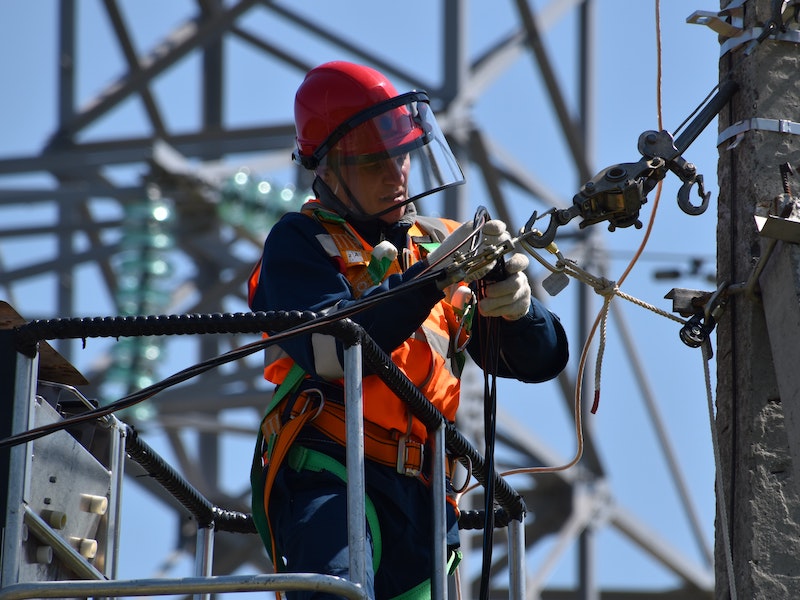Vegetation Management Solutions: Enhancing Infrastructure Reliability
Respond efficiently today with the vegetation management solutions of tomorrow
In 2024, more than 61,000 wildfires burned across the United States, consuming over 8.8 million acres.1 As environmental conditions continue to shift, utilities have an increasing responsibility to engage in effective vegetation management solutions. Utilities must navigate increasing regulatory pressures to ensure environmental safety and compliance.
These solutions extend beyond reducing wildfire risks. Effective utility vegetation management also helps prevent power outages, infrastructure damage, property damage, road accidents, and even health hazards due to the spread of invasive plant species.
Logic20/20’s vegetation management services mitigates risk, improves safety, and reduces costs for utilities—all to enable critical wildfire reduction.
Challenges of vegetation management
Public and federal pressure for advanced safety measures
Increased wildfire risk and costs
Limited situational awareness
Incomplete historical and manually collected data
Regulatory requirements for consistent and risk-informed inspection
Vegetation management work is essential for addressing these challenges and ensuring public and environmental safety.
WEBINAR
See it, solve it: How asset image analytics supercharges utility operations
WHITE PAPER
Transforming utility operations with asset image analytics
What we do
Logic20/20 helps utilities shift from reactive vegetation management to a proactive, data-driven approach—supporting better decision making, operational efficiency, and compliance.
Building a strong data foundation
Effective vegetation management starts with clean, reliable data. We help utilities build scalable data infrastructures that enable targeted risk mitigation and smarter resource allocation.
Integrate clean data from multiple sources
We unify data from satellite imagery, LiDAR, GIS, asset records, and inspection reports to create a comprehensive view of vegetation risk across the service area.
Automate with pipelines and MLOps
Our teams implement automated data pipelines that streamline ingestion, processing, and model deployment—supporting fast, consistent insights.
Deploy scalable data platforms
We design cloud-native platforms that support vegetation analytics, operational reporting, and secure collaboration across utility teams.
Turning data into action with AI
Advanced analytics and machine learning turn raw data into actionable intelligence—enabling utilities to prioritize risks, reduce inspection costs, and improve vegetation outcomes.
Image analytics for desktop inspection
We apply AI-powered computer vision to analyze high-resolution imagery, reducing the need for expensive aerial inspections and accelerating issue detection.
Define and update high-risk zones
By combining asset condition, weather data, vegetation growth patterns, and historical incidents, our models dynamically identify the highest-risk areas for focused mitigation.
Optimize inspection programs
Predictive models help utilities schedule and prioritize inspections based on vegetation risk, terrain, and historical trends—supporting both routine and enhanced programs.
Empowering field operations
To translate insights into action, field teams need visibility and tools they can trust—even in remote or high-risk areas.
Equip crews with mobile maps and offline access
We enable field teams to view vegetation data, report updates, and capture images—all within mobile tools that work without connectivity.
Add safety context to field awareness
Environmental overlays such as red flag warnings and weather alerts help crews stay informed and operate safely under dynamic conditions.
Staying ahead of compliance
Utilities are under increasing pressure to prove the effectiveness of their vegetation management programs. We help simplify compliance workflows and improve audit readiness.
Support wildfire mitigation reporting
We help automate documentation and evidence-gathering for wildfire mitigation mandates such as California’s WMP.
Demonstrate program effectiveness
Our models quantify the impact of vegetation efforts, giving compliance and regulatory teams clear, defensible data—no manual digging required.
Case studies
Logic20/20 helps utilities leverage technology to prevent vegetation-related incidents.

Featured
Mitigating wildfire risk with computer vision–aided asset management

Featured
Preventing wildfire and protecting public safety with cloud-based machine learning
Let’s talk about a vegetation management analytics platform for your utility.
Key considerations for vegetation management programs
Training and education for vegetation management
Training and education are vital for equipping utility personnel with the skills and knowledge required for effective vegetation management. Regular training on best practices in tree identification, pruning techniques, safety protocols, and other areas is essential.
Personnel should also be proficient in using specialized equipment, such as aerial lifts and chainsaws, and should understand the principles of risk management and regulatory compliance. Collaboration with industry experts and regulatory agencies can help utilities stay abreast of the latest best practices and technologies.
Training on satellite data analysis and vegetation mapping can further improve the accuracy and efficiency of vegetation management programs. By investing in comprehensive training and education, utility companies can enhance the effectiveness of their vegetation management efforts, reduce the risk of power outages and accidents, and build trust with their customers.
Environmental sustainability and vegetation management
Environmental sustainability is a crucial consideration in vegetation management. Utilities must balance the need to control vegetation with the imperative to protect the environment. Implementing sustainable practices, such as using environmentally friendly herbicides and minimizing waste, is essential.
Utilities should also consider the impact of their vegetation management activities on local ecosystems and wildlife habitats. Utilizing satellite data and vegetation mapping can help identify areas of high environmental sensitivity and develop targeted management strategies.
Collaboration with environmental organizations and regulatory agencies ensures that vegetation management practices are sustainable and environmentally responsible. Prioritizing environmental sustainability not only reduces the utility’s environmental footprint, but also enhances its reputation with customers and stakeholders.
Sustainable vegetation management practices can lead to cost reductions and improved operational efficiency. By investing in environmental sustainability, utilities contribute to a healthier and more sustainable environment for future generations, aligning their operations with broader societal goals.
Navigating regulatory compliance
Finally, utility companies need to be wary of regulatory pressures and compliance audits. Many states have strict wildfire laws, such as California’s Wildfire Mitigation Plan (WMP). They require utilities to prove that their vegetation management programs are effective.
Logic20/20’s analytical models offer crucial data, demonstrating the impact of a utility company’s vegetation management solution on the environment and its compliance with regulations. You no longer have to dig through data manually to understand the effectiveness of your vegetation management practices.

